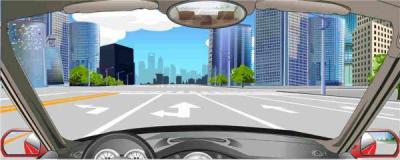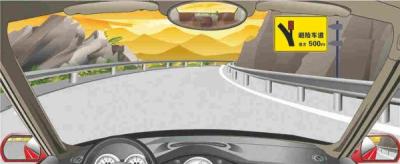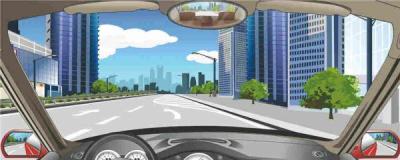1、The sign in front indicates a one-kilometer distance from the next left exit.

A、Right
B、Wrong
Answer:B
2、The sign in front indicates the name and number of the highway.

A、Right
B、Wrong
Answer:A
3、The sign on the right warns of a wet road surface ahead.

A、Right
B、Wrong
Answer:A
4、The sign on the right is an advance announcement of the highway destination.

A、Right
B、Wrong
Answer:B
5、The sign on the right side indicates that turning left is not permitted at the intersection ahead.

A、Right
B、Wrong
Answer:A
6、When driving on an expressway, which of the following statements is correct?
A、Drives are not allowed to drive by riding or rolling on the lane dividing line
B、Drivers are prohibited from driving on road olders
C、Drivers may overtake on the ramp, the acceleration lane or the deceleration lane
D、Drivers are prohibited from learning to drive
Answer:C
7、What should the driver do when the motor vehicle passes the level crossing?

A、Change to neutral gear and slide over
B、Stop, look and pass
C、Speed up, look and pass rapidly
D、Slow down, look and pass slowly
Answer:B
8、When a wounded person suffering burns is thirsty, he should only drink plain boiled water.
A、Right
B、Wrong
Answer:B
9、Under such circumstances, motor vehicles are not allowed to overtake.

A、Right
B、Wrong
Answer:A
10、Gun powder, explosives and detonating powder belong to which of the following dangerous chemicals?
A、Oxidizing materials
B、Inflammable solid materials
C、Explosives
D、Self-igniting articles
Answer:C
11、Under such circumstances, what should motor vehicle drivers do?

A、Continuously sound the horn
B、Pass quickly
C、Pass at a lower speed
D、Bypass from either side
Answer:C
12、When driving on a muddy road, what should drivers do if the wheels spin and slide?
A、Cover the ground under the wheels with gravels
B、Change to a high gear and speed out
C、Cover the ground under the driving wheels with gravels
D、Violently turn the steering wheel and suddenly leed up
Answer:C
13、The guide arrow on the road surface of this lane indicates that drivers are only permitted to continue straight at the intersection ahead.

A、Right
B、Wrong
Answer:B
14、Which of the following is an inflammable solid material?
A、Matches
B、Gun powder
C、Calcium carbide
D、Explosives
Answer:A
15、The sign on the right side warns of an emergency lane 500 meters ahead.

A、Right
B、Wrong
Answer:A
16、When driving on an expressway in rain, the driver should slow down to avoid steering failure arising from "water slide"
A、Right
B、Wrong
Answer:A
17、The guide arrow on the road surface of this lane indicates that the lanes ahead will merge to the left side.

A、Right
B、Wrong
Answer:A
18、What should motor vehicle drivers do when going straight and passing through the intersection ahead?

A、Reduce speed when approaching the intersection
B、Reduce speed after entering the intersection
C、May pass through the intersection without speed reduction
D、Accelerate in advance to pass through the intersection
Answer:A
19、When driving on a muddy road, the driver should hold the steering wheel firmly and speed up to pass through.
A、Right
B、Wrong
Answer:B
20、The area in the yellow rectangle markings on the right side of the road indicates that temporary stopping is permitted here.

A、Right
B、Wrong
Answer:B